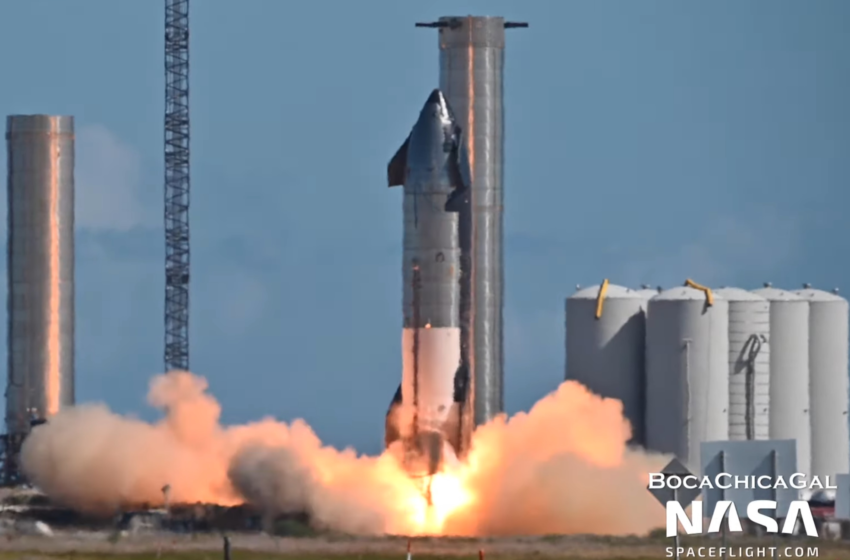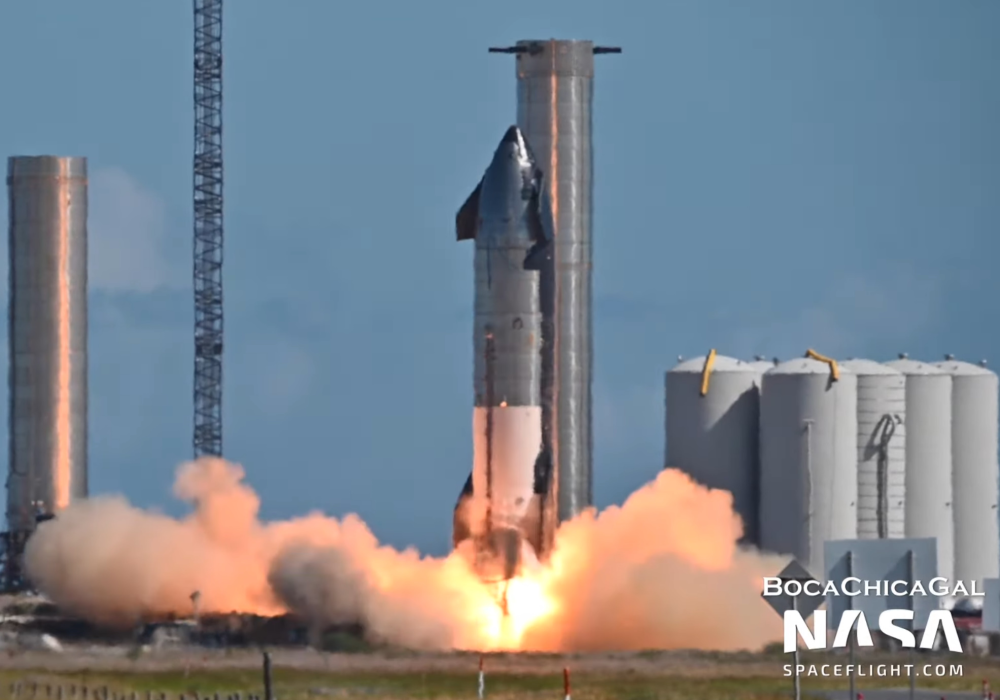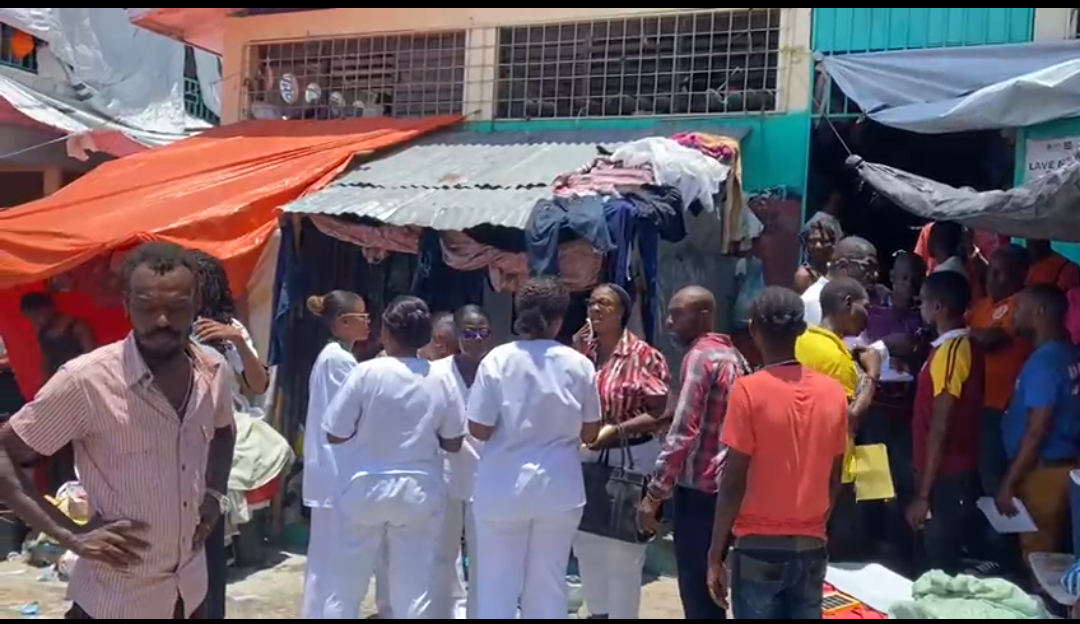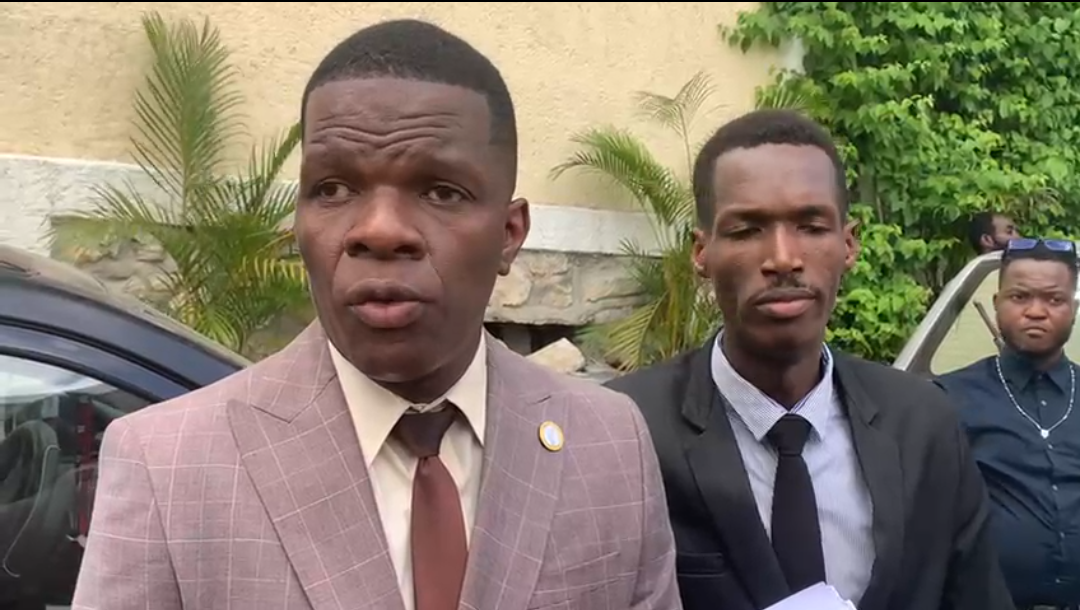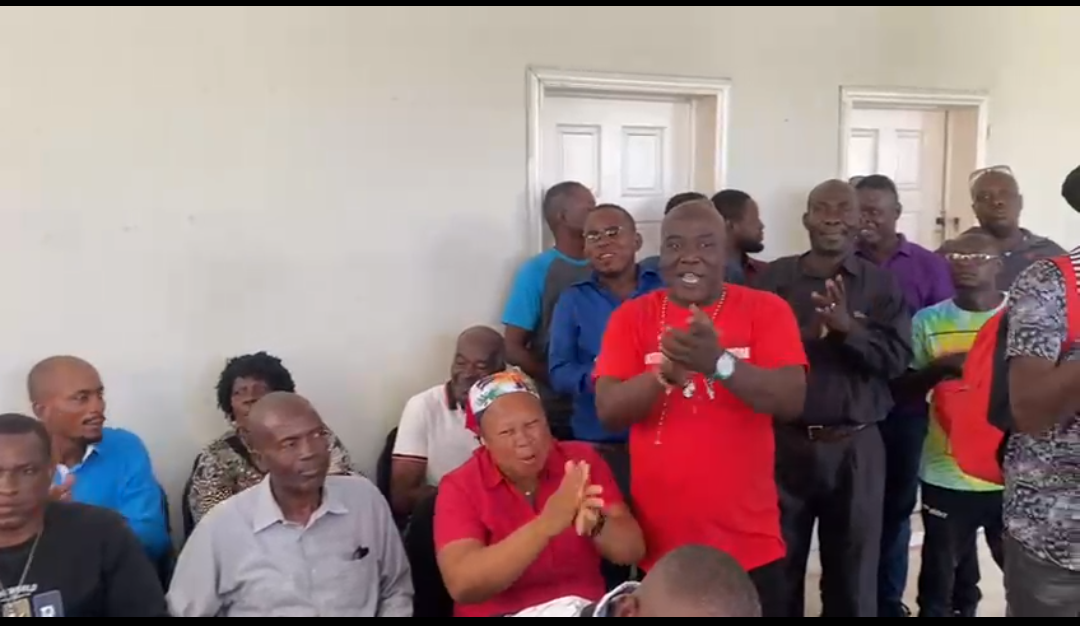With a significant milestone under its belt, Ship 20 awaits the next steps in preparing for an orbital velocity flight test, likely watching on as Super Heavy Booster 4 undergoes a more ambitious ground test campaign. The continued preparations with Ship 20 and Booster 4 continue amid a traffic jam of vehicles back at the Production Site, with parts for Booster 7 and Ship 23 being spotted. At the same time, the new “Wide Bay” – required for the increasing processing cadence – rises out of the ground.
Ship 20 and Booster 4:
SpaceX broke new ground with its Starship program when Ship 20 fired up on Friday.
This was the first time more than three Raptors had been fired up on a Starship, along with the first time more than one RVac had been ignited simultaneously.
While the test schedule hasn’t followed the highly ambitious timeline outlined at times by Elon Musk via various tweets, the progress of Starship continues to astound. Moreover, the vehicles are coming through the testing without the RUDs (Rapid Unplanned Disassembly) of old and appear to follow a successful design evolution, with more upgrades yet to come.
Ship 20 is currently destined to fly on the test flight, although switching to Ship 21 remains a possibility. Regardless, 20 has already proven its worth via ground testing, with numerous milestones accomplished for the overall test program.
Friday’s milestone passed several objectives, with prop loading followed by an impressive preburner test prior to a recycle and then the first-ever six engine ignition of its full set of Raptors.
Elon Musk soon confirmed the test involved all six engines.
Good static fire with all six engines!
— Elon Musk (@elonmusk) November 12, 2021
Only a handful of Ship 20’s Thermal Protection System (TPS) tiles were liberated during the test, which would have imparted more stress on their attachment points via the vehicle being held in place during a Static Fire test, in comparison to being released during a launch.
This too is a sign of progress and will continue to feed data into future vehicles.
And Ship 20’s TPS tiles look to be in great shape. Only lost a handful despite the vibrations involved with a six engine firing (and prop loading, detanking, etc).
Mary (@BocaChicaGal) has us this close up post-test live view:
➡️https://t.co/APLl78W8fn https://t.co/rpEPTkYXKB pic.twitter.com/kEDuLDNZ9z
— Chris Bergin – NSF (@NASASpaceflight) November 12, 2021
Road closures over the coming days, one of the official signs of upcoming testing, have been posted, leaving open the possibility that Ship 20 may yet conduct additional testing.
However, the focus will soon switch to Booster 4, which will require an even greater leap forward with Static Fire testing. Booster 4 sports 29 Raptor engines, with the possibility that a test of the full set of engines could occur before the end of the year.
First, the Super Heavy rocket will need to return to the Orbital Launch Site (OLS) mount, as it did during the first-ever full-stack fit check. During that process, the two vehicles were lifted into place by the huge LR 11350 “Frankencrane” – which has since been dismantled and shipped away from Starbase.
SpaceX’s new crane, an LR 11000, with SpaceX branding and color scheme, has since arrived and been assembled at the launch site, while the previous LR 11000 (“Bucky”) has been transferred to the Production Site.
The LR 11000 is not tall enough to conduct the same stacking operation as the LR 11350, thus stacking will likely be undertaken by the chopstick arms on the Mechazilla system, which is part of its designed role, along with catching Boosters and Ships upon their return.
Testing on the chopsticks has been ongoing over recent weeks, although it is yet to move up and down the launch tower as required for stacking operations.
Recent days have involved “Reeving” the lines that will allow the chopsticks to move vertically on the Tower, with testing of this system potentially set to occur this month.
The carriage pulleys are alive this morning!
Watch it happen in real time on Starbase LIVE: https://t.co/PWEa9gsf6a
– @NASASpaceflight pic.twitter.com/F1pJ9Ehxaj
— Nic Ansuini (@NicAnsuini) November 9, 2021
While stacking could be its debut role, it is not set to catch a booster until after the upcoming test flight, which will see both vehicles splashdown away from the launch site.
Production Site:
Just a short drive down Highway 4, the Production (Build) Site continues to be a hive of activity.
Booster 5 and Ship 21 are both in an advanced state of processing, with most of the current work being focused on the final TPS tile installation on Ship 21’s nosecone.

Ship 21’s nosecone via Mary (@bocachicagal) for NSF
Additional Boosters and Ships are also being prepared, with Ship 22 and 23 sections in various stages of processing.
The boosters are also lining up, with sleeving of Booster 6’s Forward Dome recently completed.
On Sunday, Mary (@bocachicagal) spotted the Forward Dome for Booster 7, a clear sign of what is likely to be a very active launch cadence in 2022 – even amid the potential some of the upcoming boosters aren’t for flight as SpaceX modifies their vehicles based on the early test campaigns.
Booster 7 (SEVEN) Forward Dome.
📷Mary (@BocaChicaGal)
Starship Discussion: https://t.co/rsiz9eldie pic.twitter.com/wkrdIMhHjN— Chris Bergin – NSF (@NASASpaceflight) November 14, 2021
To cater to all these new vehicles, SpaceX is already building a new “Wide Bay” set to be twice the width of the current High Bay.

The new Wide Bay, with the LR 11000 (“Bucky”) inside – via Mary (@bocachicagal) for NSF
The since-transported LR 11000 (“Bucky”) is now conducting its new role with the assembly of this new facility, which is already quickly rising out of the ground.
Raptors:
Although SpaceX’s mandate is to return Boosters and Ships – and their Raptor engines – for reuse, some vehicles are likely to be lost during the test program phase, in addition to a large stock of units being required for the initial family of vehicles.
Elon Musk has already confirmed the 29 engines on the Super Heavy Booster will evolve to 33 in the short term.
Raptors have been rolling into the Production Site on an almost-daily basis, usually sporting their own “memes” in addition to their own engine number.
The engines, which have been upgraded over time, are currently built at SpaceX’s main factory in Hawthorne, California, then transported to McGregor for testing. In addition, flight units meant for the Starship program are currently tested at McGregor before being driven to the Starbase launch facility.
While Hawthorne will continue to build the RVac engines, in tandem with working on Raptor evolution designs, McGregor will soon become the hub for Raptor 2 production.
Soon after Elon Musk revealed this forward path, groundbreaking occurred on the McGregor site, which has since seen a facility rise out of the ground in double-quick time.

The Raptor 2 Factory at McGregor, via Gary Blair for NSF L2
This evolved engine – which is already being tested – will become the workhorse for the Starship Program. Production at McGregor will also allow on-site testing and mitigate the journey from California en route to Starbase.
McGregor’s three test stands have been kept busy with five test bays for Raptor engines, with Reagan Beck catching numerous tests over recent weeks.
A Raptor’s Roar 🔥🚀🤩#SpaceXTests @NASASpaceflight pic.twitter.com/Vue3HuiyUT
— Reagan Beck (@bluemoondance74) November 5, 2021
With the production of numerous future Starships and a healthy supply of engines, 2022 could easily involve multiple test flights out of Starbase, setting the stage for the vehicle to become operational ahead of its future goals, which now officially include – following the end of legal action – returning humans to the surface of the Moon.
Photos and videos provided by Nic Ansuini (@nicansuini), Mary (@bocachicagal), Gary Blair, and Reagan Beck (@bluemoondance74). Additional information and article assistance provided by the NSF (L2 Level) Discord.
For live updates, follow NASASpaceFlight’s Twitter account and the NSF Starship Forum Sections.
**Support NSF’s youtube channel by subscribing and/or joining here**
Grab some cool gear along with the ability to support our content: https://shop.nasaspaceflight.com/

